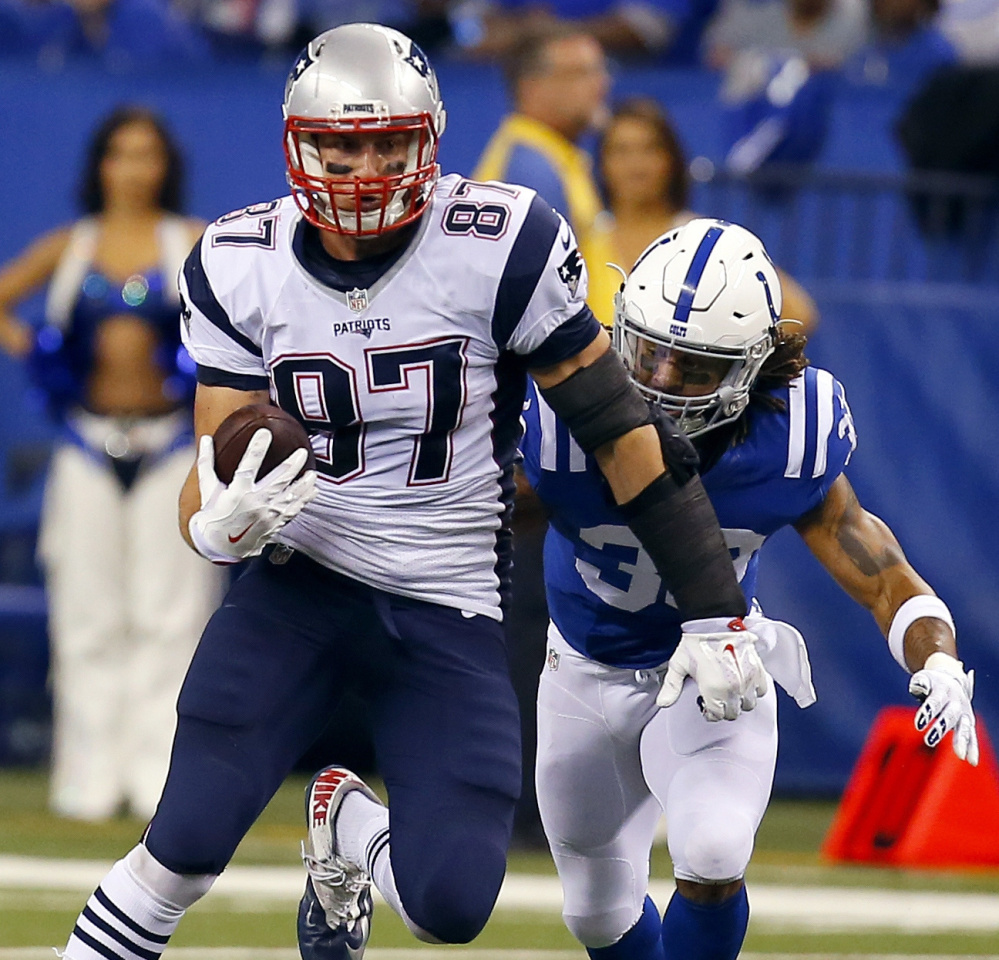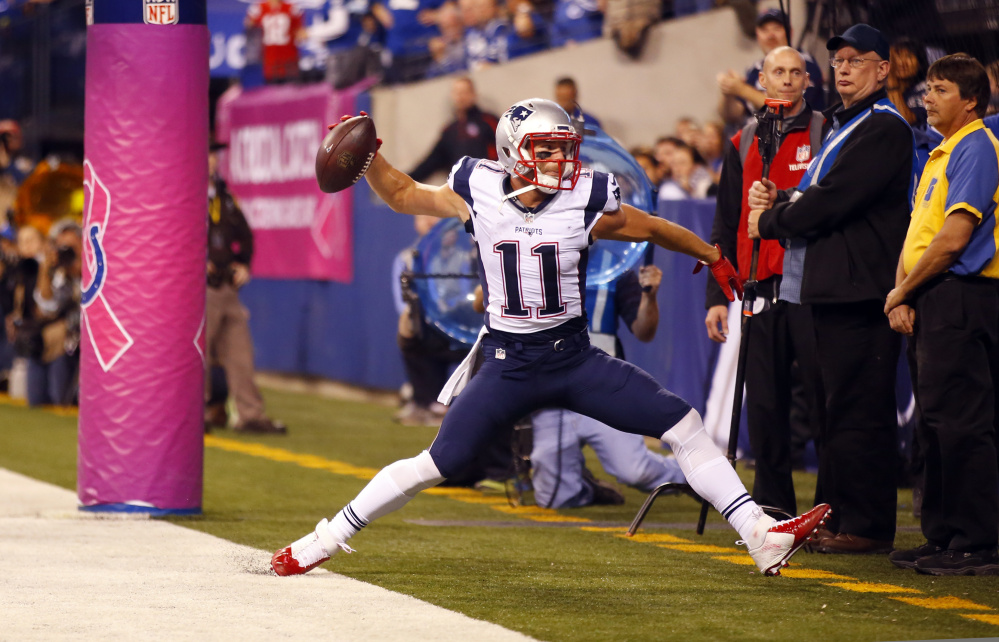So you plan on beating the New England Patriots. Good luck. Five straight teams have tried and none has come closer than a touchdown. That’s not to say they’ll finish 19-0 with a Super Bowl ring, but after analyzing their first five games, there are a lot of prerequisites to defeating the defending world champs.
Start with the challenge of bottling up the offense because no team has yet succeeded. Their 3.55 points per drive are tops in the NFL by over a half a point and higher than even the 2007 Patriots by .18 points. The reason no one has been able to stop them is because they create so many matchup issues that require a complete defense to stop.
There are three major factors fueling that success: First and foremost is the quick passing game. If you can’t stop Julian Edelman and Danny Amendola from creating or finding space right at the snap of the ball it’s going to be a long day. Eighty-two percent of Brady’s completions this year have come in under 2.6 seconds, the second-highest percentage in the league.
You’ll never completely shut Brady down but there are a few ways to limit his effectiveness. The quickest way is simply by having pass-rushers that can get home that quickly. The Patriots’ pass protection is easily their biggest weakness on offense and it will only be exacerbated by the loss of left tackle Nate Solder for the season.
Even with the quickest time to throw in the NFL, the offensive line has surrendered pressure on 24 percent of Brady’s dropbacks, just under the league average of 27 percent. So yes, you read that correctly, even the Patriots’ biggest offensive weakness is better than average.
In recent weeks we’ve seen teams often decide to drop eight men into coverage and only rush three linemen. The Cowboys in particular had a lot of success with this in the first half when their pass-rush got home, but when it doesn’t you can leave yourself susceptible down the field.
While Brady only has 25 completions after 2.6 seconds, his passer rating on those throws is a league-leading 148.0. The best way to deal with this would be to play press-man coverage and stall the undersized receivers’ releases at the line of scrimmage, but this is obviously easier said than done. Pick routes and the Rob Gronkowski problem comes to mind, but it’s more manageable than Brady slicing up a soft zone.
The second dilemma the Patriots present is their use of multiple tight end packages. They’ve had at least two tight ends on the field for 190 of their 357 offensive snaps through Week 6 and at least three tight ends on the field for 54 snaps. It also gets screwy when you decide how to treat Michael Williams, the former Lions offensive tackle who played tight end at Alabama. On 131 snaps this season Williams has run-blocked on 79, pass-blocked on 22 and run 30 pass routes. At 6-foot-6, 306 pounds, do you treat him like a tight end though he can block like a tackle or do you treat him like a tackle even though he can still move and catch? It’s a challenge, but not as big as the third key element to New England’s offensive success: Gronkowski.
I mentioned earlier that pressing Brady is one way of slowing the offense, but that leaves a safety or a linebacker one-on-one with Gronk. You can live with him beating you in the open field because while he dominates the intermediate range, he doesn’t quite have the speed to be a serious deep threat. Where you can’t live with him beating you is in the red zone. You better have a competent cover safety, a big corner, an athletic linebacker or some plan of attack because they will split him wide on his own at the goal line. If you’re not prepared, it’s an easy six points when he gets man-to-man coverage.
Against the Pats’ defense the blueprint is murkier because of how drastically New England can change game to game. If Coach Bill Belichick has proven one thing over the years, it’s that there’s no one scheme superior to others. From week to week New England alternates regularly between 3-4 and 4-3 fronts, zone and man schemes, and blitz-heavy and passive philosophies. It’s all predicated on taking away what the offense does best.
The most effective way to combat this is to be a balanced offense and exploit where the Patriots are least talented – up front. The defensive line has easily been their biggest weakness on the season; they’ve graded out below average in run defense and pass-rushing. Linebackers Jamie Collins and Dont’a Hightower are going to clean up a lot of their messes, but their job has been extremely difficult this year with weak performances in front of them. To beat the Patriots, you have to run the ball and a strong offensive line will go a long way in this matchup. Their secondary has been much better than once thought with the breakout season from Malcolm Butler, but unless you have a quarterback who can match Brady throw for throw, you don’t want to get into a shootout.
Add it all up and here’s the checklist for teams hoping to challenge the Patriots:
• You need a lockdown secondary with a couple of elite pass rushers
• Someone who can cover Gronk
• A mistake-free quarterback
• A top-five ground game
This weekend’s game with the Jets will be a great litmus test on which matchups matter most because New York has a number of the components we discussed (especially the ability to play man coverage in the secondary, thanks to Darrelle Revis), but certainly not all.
This isn’t the 2007 Patriots by any means, but the expected dropoff in talent from the Super Bowl-winning team a year ago seems nonexistent at this point. The Pats aren’t perfect but there aren’t many weaknesses to exploit … and there aren’t many teams capable of exploiting them.
Mike Renner is a writer for Pro Football Focus and a contributor to The Washington Post’s NFL coverage.
Send questions/comments to the editors.



